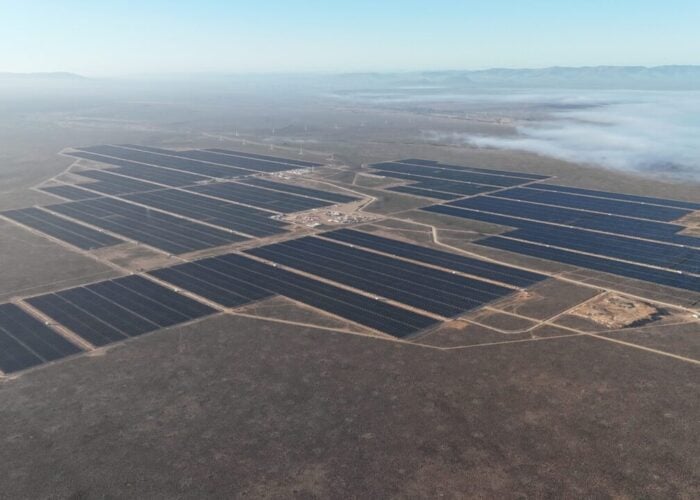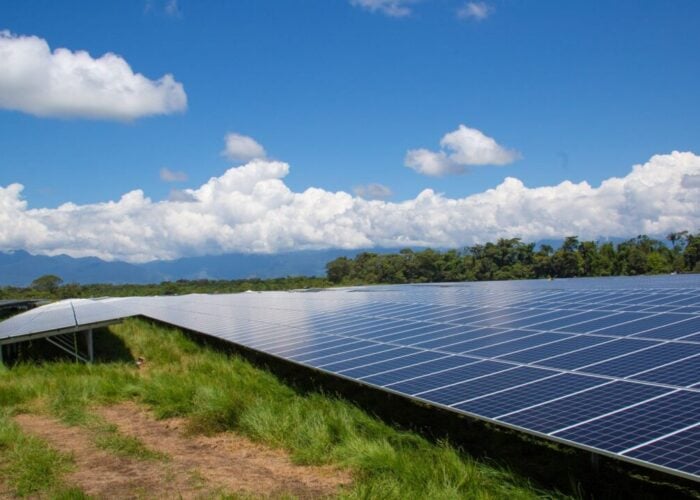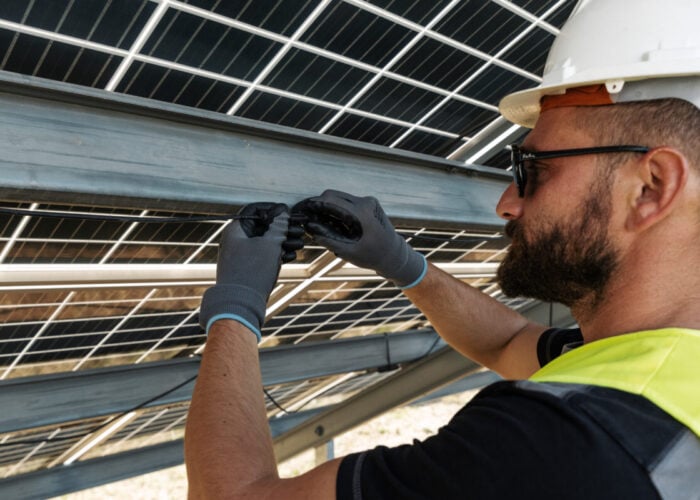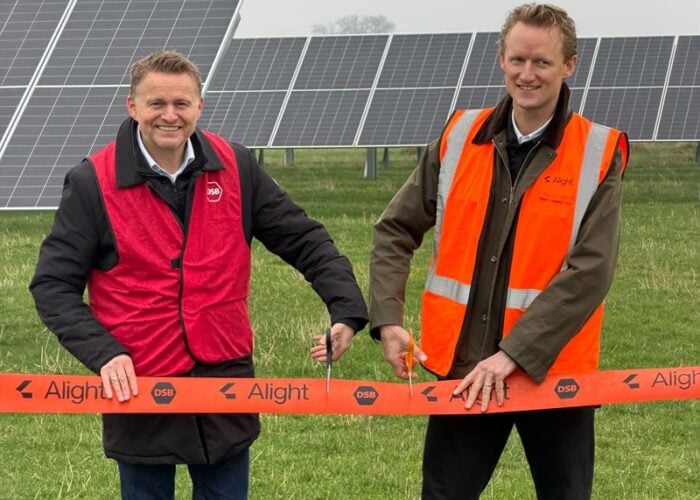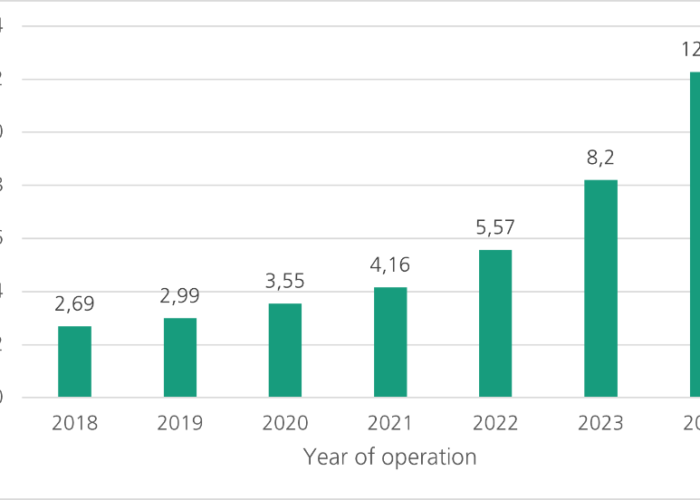
As the world races toward decarbonisation, India is navigating the twin pressures of rapid economic growth and rising climate responsibility. Now the fastest-growing major economy, its expanding energy needs are reshaping global demand and future emissions.
In response, New Delhi has set one of the world’s most ambitious clean-energy goals: 500GW of non-fossil capacity by 2030, spanning solar, wind, hydro, nuclear and storage. Hitting this target would transform the national grid, with 60-65% of installed capacity and at least half of all power generation coming from renewables – marking a decisive shift in India’s energy trajectory. However, several challenges remain.
Try Premium for just $1
- Full premium access for the first month at only $1
- Converts to an annual rate after 30 days unless cancelled
- Cancel anytime during the trial period
Premium Benefits
- Expert industry analysis and interviews
- Digital access to PV Tech Power journal
- Exclusive event discounts
Or get the full Premium subscription right away
Or continue reading this article for free
In an exclusive conversation with PV Tech, Abhinav Jindal, deputy general manager at Power Management Institute (PMI), contextualises the scale of the transformation and India’s progress so far.
“India has been the largest growing economy in the world for some time and will continue to do so,” he says, adding that the country’s renewable additions have been “steadily increasing over the last 4-5 years” and remain firmly on track to meet the 500GW goal.
Grid transmission lag: panels ready, power stranded
For India, the push toward 500GW of non-fossil capacity is unfolding atop an energy system long shaped by coal. “Traditionally, our power systems have been coal dominated,” Jindal explains, noting that a coal plant typically needs four to five years to build – a time during which transmission, evacuation and distribution networks expand in parallel. Renewables, by contrast, disrupt this tempo. Solar and wind projects can be completed in just 12–15 months, far outpacing upgrades to the grid.
This mismatch is already playing out across several states. “Very often you will find the panels are in place, the modules are in place, the system is commissioned, but you can’t evacuate power, mainly because [the transmission network] has not been bolstered,” he says.
The other hurdles that emerge are legacy power purchase agreement (PPA) issues and low costs. “In some places, companies cannot take off the power that comes from renewables due to legacy PPA issues. Also, some bids have been priced at aggressively low levels, which makes it difficult for the states to honour those bids.”
Still, Jindal stresses the strength of India’s grid. “It has been over 10-12 years since we have seen a major blackout in India, which demonstrates that overall, we have a very healthy power system on all counts, not just evacuation.”
Furthermore, he adds, that under the One Nation, One Grid (ONOG) framework and coordinated planning by the Central Electricity Authority (CEA), the grid is pretty much integrated. “We continue to maintain this robustness even as renewables penetrate the grid.”
According to Jindal, renewables come with inherent intermittency and weather-driven variability. While forecasting and planning can ease some of the unpredictability, their nature means the system will still require additional capacity to step in when fluctuations become significant.
Undersubscribed tenders and the need to reform
A parallel challenge unfolding in India’s clean-energy expansion is the growing incidence of undersubscribed tenders. Jindal attributes this to the increasing complexity of tender design. “Tenders have become increasingly innovative, and storage is emerging as a key element of power offtake,” he explains, with most now structured as firm and dispatchable renewable energy (FDRE), round-the-clock (RTC) or hybrid models.
But innovation has also exposed a structural flaw: unrealistically low baseline price estimates. “Some of the estimates made at a fundamental level are so low that we don’t find broad participation,” he says, noting that tariffs, in the race to bottom out, have crossed into unsustainable territory.
The government is reassessing the lowest bid (L1) benchmarks to avoid tender failures and restore market confidence. Yet even successfully auctioned bids face uncertainty when buyers back away from signed PPAs. “A risk mitigation mechanism needs to be built into the tendering strategy to assure developers that their capex is not at risk,” Jindal stresses. Efforts are already underway, including bundling power from different sources and allocating it to deficit states to discourage reneging.
Storage remains another sticking point. “Projections for storage costs have not aligned with industry trends,” he notes. This has created mismatches between tender assumptions and actual adoption.
However, Jindal underscores the solar sector’s overall momentum: India added 30GW of solar capacity between 1 April to 31 October in 2025 and is on track to add another 20GW-25GW this year. Meanwhile, the country is also scaling energy storage capacity, with cumulative installed capacity now reaching 490MWh.
“We could have done better, but this does not mean we didn’t perform well. Even at the rate of adding 40GW year-on-year for the next 5-6 years, at a growth rate of around 10%, we would be adding some 200GW-250GW. We are already at 250GW, so we are well and truly on course to achieve our target of 500GW.
India’s path to COP33 and beyond
Jindal frames India’s energy ambition through the lens of the Indian government’s self-reliance policy framework, Atma Nirbhar Bharat, with a sharper focus on energy self-sufficiency under Urja Atma Nirbharta. He highlights three core technologies – solar PV, battery storage and green hydrogen – and stresses that India can no longer afford a linear path. “We cannot wait for development to finish before deployment begins, or we will always be catching up,” he says. While solar has already shifted into full-scale deployment, he notes that “for green hydrogen and storage, deployment and development must progress simultaneously” if India is to emerge as a true energy powerhouse.
Looking ahead to COP33, Jindal argues that India’s leadership carries particular weight for the Global South. With India’s renewable total generation capacity expected to approach 1,000GW within five years – “60-65% from renewables” – the country will stand shoulder to shoulder with the US. By 2035, he believes India will be “second only to China” in both economic scale and climate leadership, signalling its arrival as a defining force in the global energy transition.
Looking ahead to COP33, Jindal expects stabilising tariffs, aligned domestic production and fully subscribed tenders to translate into real capacity – and global climate leadership for India.
This story was edited on 24 November 2025 at the interviewee’s request to update the organisation they belong to.

